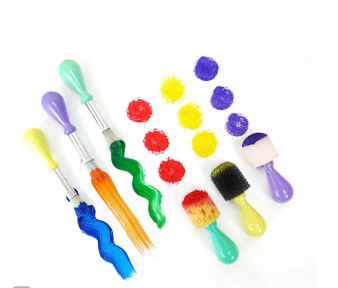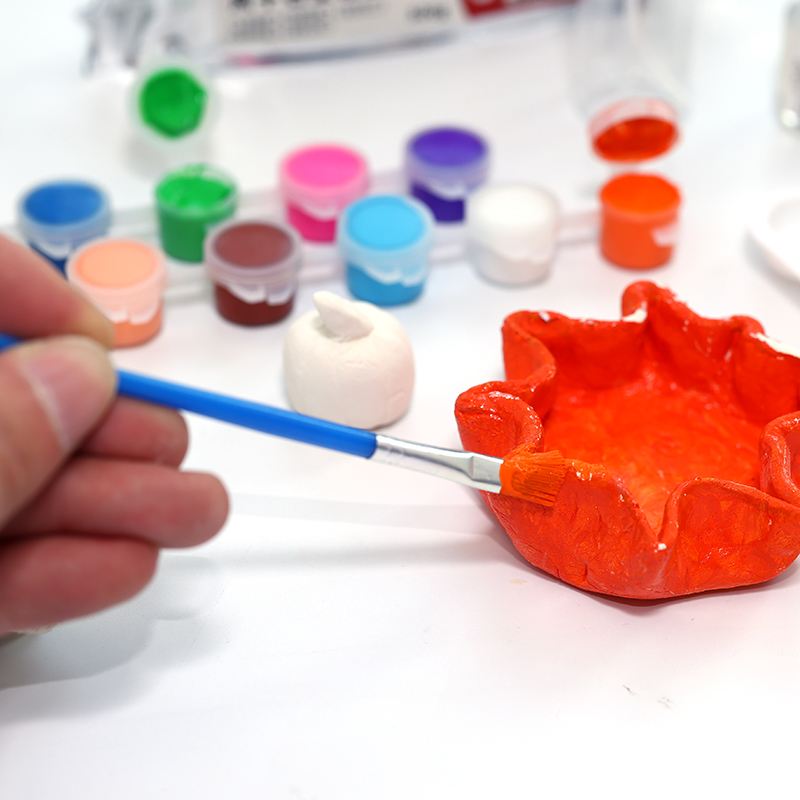Views: 0 Author: Site Editor Publish Time: 2025-06-14 Origin: Site








Poster paint is a popular medium for beginners, children, and craft enthusiasts due to its ease of use and vibrant colors. However, when it comes to longevity, a common question arises: Is poster paint permanent? While it may work well for temporary projects and quick crafts, its permanence in art can be a matter of concern. Understanding what poster paint is made of and how its ingredients behave is crucial for anyone considering using it for more lasting artworks. This article will explore the characteristics of poster paint, its durability, and how you can improve its longevity.
Poster paints typically use water as a medium, unlike oil paints, which use oil as a binder. The binder in poster paint is often a gum arabic solution, which helps the pigments adhere to the painting surface. Gum arabic is water-soluble, making the paint easy to clean up, but it also limits its permanence.
In contrast to oil-based paints, which dry through oxidation and form a durable surface, poster paint dries through evaporation, which does not provide the same level of durability. The absence of oils means that poster paint remains softer and more susceptible to fading or damage.
Pigments are responsible for the color in poster paint. These pigments can be either natural (derived from minerals, plants, or animals) or synthetic (created in labs through chemical processes).
Natural Pigments: Historically, natural pigments like ochre (for yellow) or lapis lazuli (for blue) were used in traditional art forms. These pigments are typically less vibrant than synthetic ones and have varying levels of lightfastness.
Synthetic Pigments: Modern poster paints often use synthetic pigments, which are more vibrant and stable. For example, quinacridone pigments offer brilliant reds, while phthalocyanine creates deep blues and greens. However, these synthetic pigments, although vibrant, may still lack the durability of pigments found in professional-grade paints.
The choice of pigment in poster paints determines not just the vibrancy of the colors, but also the potential for fading over time.
Other ingredients in poster paints help to adjust the texture, enhance mixing properties, and slow down drying time if needed. Stearate is commonly added to ensure that the pigment particles are well suspended in the liquid binder. This helps the paint go on smoothly and ensures the pigment does not separate from the liquid base.
Additional additives may include:
Thickeners: Used to adjust the paint's consistency and texture, making it more suitable for different surfaces and techniques.
Retarders: Added to slow the drying process, allowing for more working time, especially in humid environments.
Driers: These chemicals help accelerate the drying process but are less commonly used in poster paint due to its quick-drying nature.

Poster paint, while easy to use and vibrant, is not designed for permanence. Its water-soluble nature makes it less durable than oil or acrylic paints. Several factors affect how long poster paint can last:
Exposure to light: UV light from the sun can degrade the pigments and cause the paint to fade, especially if the work is left unprotected.
Surface and environment: The surface the paint is applied to (paper, cardboard, canvas) can impact its longevity. Poster paint works best on absorbent surfaces, but it’s more likely to fade over time when exposed to harsh conditions like high humidity or constant friction.
Chemical stability: The type of pigment used can affect the paint’s long-term stability. Natural pigments generally fade faster than synthetic ones, which can significantly impact the durability of a poster paint piece.
Poster paint is inherently non-permanent due to several factors:
Water-soluble binder: The gum arabic binder makes it easy to clean, but it also means the paint is less durable than paints with oil-based or resin binders.
Lack of durable components: Unlike acrylic or oil paints, poster paint lacks the structural integrity to withstand long-term exposure to light, moisture, or handling.
No resin or polymers: The absence of these elements in poster paint means that it does not form a tough, long-lasting layer once dried, making it prone to damage over time.
Poster paint can last for a short period under proper conditions, especially when stored indoors in a controlled environment. However, its longevity is limited compared to professional paints:
Indoors: If kept away from direct sunlight and protected from moisture, poster paint can maintain its appearance for a few months to a year.
Exposed environments: If exposed to light or weather conditions, poster paint will fade and break down within a relatively short period.
While poster paint is not inherently permanent, there are ways to extend its lifespan:
Using a fixative: Artists can apply an art fixative spray to protect poster paint from smudging or fading. This layer of protection helps preserve the paint's appearance.
Applying a varnish: A varnish can be applied over the dry paint to create a protective coating that helps prevent fading and damage from light or moisture.
Acrylic medium: For a more durable finish, some artists mix poster paint with acrylic mediums, which provide better adhesion and flexibility, enhancing the paint’s longevity.
For those who want to ensure their poster paint works last longer, consider these best practices:
Choose a high-quality paper or canvas: Using thicker, archival-grade paper or canvas can prevent wear and tear on the paint.
Use protective coatings: Sealing the paint with a protective layer can safeguard against environmental factors.
Avoid frequent handling: Displaying poster paint art in frames and avoiding direct exposure to sunlight can help maintain its appearance.
If you need a more permanent solution for your artwork, consider these alternatives:
Acrylic paint: Acrylics are water-based, like poster paint, but they dry faster and are more durable and permanent due to their polymer binder. Acrylic paints also provide vibrant colors and can be used on a variety of surfaces.
Oil paint: Oil paints are the gold standard for permanent artworks. The oils used in oil paints dry slowly through oxidation, forming a durable and flexible surface. Oil paints are ideal for fine art and long-lasting pieces.
Watercolor with archival paper: If you prefer the fluidity of watercolors, using archival-quality paper can improve the longevity of your work.

For temporary projects: Poster paint is an excellent choice for quick, fun crafts and projects where permanence isn't a concern.
For professional and permanent artwork: For artists working on long-lasting pieces, acrylics or oils are better options as they provide durability and better lightfastness.
Poster paint is a versatile and affordable medium, but it’s not designed for permanence. While it is perfect for quick, temporary projects or experimentation, it doesn’t offer the durability of acrylics or oils. However, by using proper sealing techniques or choosing alternative mediums, you can extend the life of your poster paint artwork. For long-lasting creations, consider using more permanent paints like acrylics or oils.
A: Poster paint is not recommended for outdoor use without additional protection. It fades quickly when exposed to the elements.
A: Yes, poster paint tends to fade quickly when exposed to light or environmental factors, especially without proper protection.
A: Use fixatives, varnishes, or acrylic mediums to protect and extend the life of your poster paint artwork.
A: While poster paint is great for temporary work, it is not ideal for professional art due to its lack of permanence. Artists should opt for acrylic or oil paints for permanent pieces.